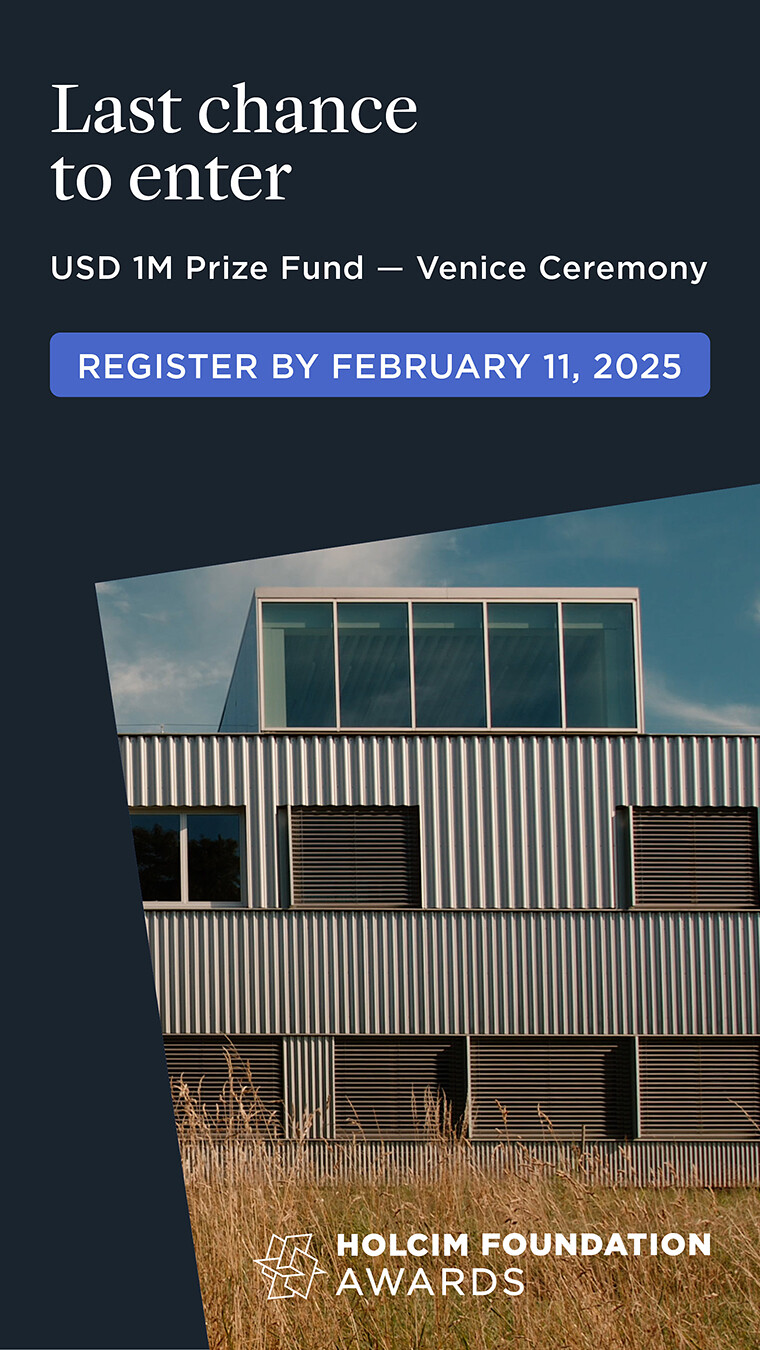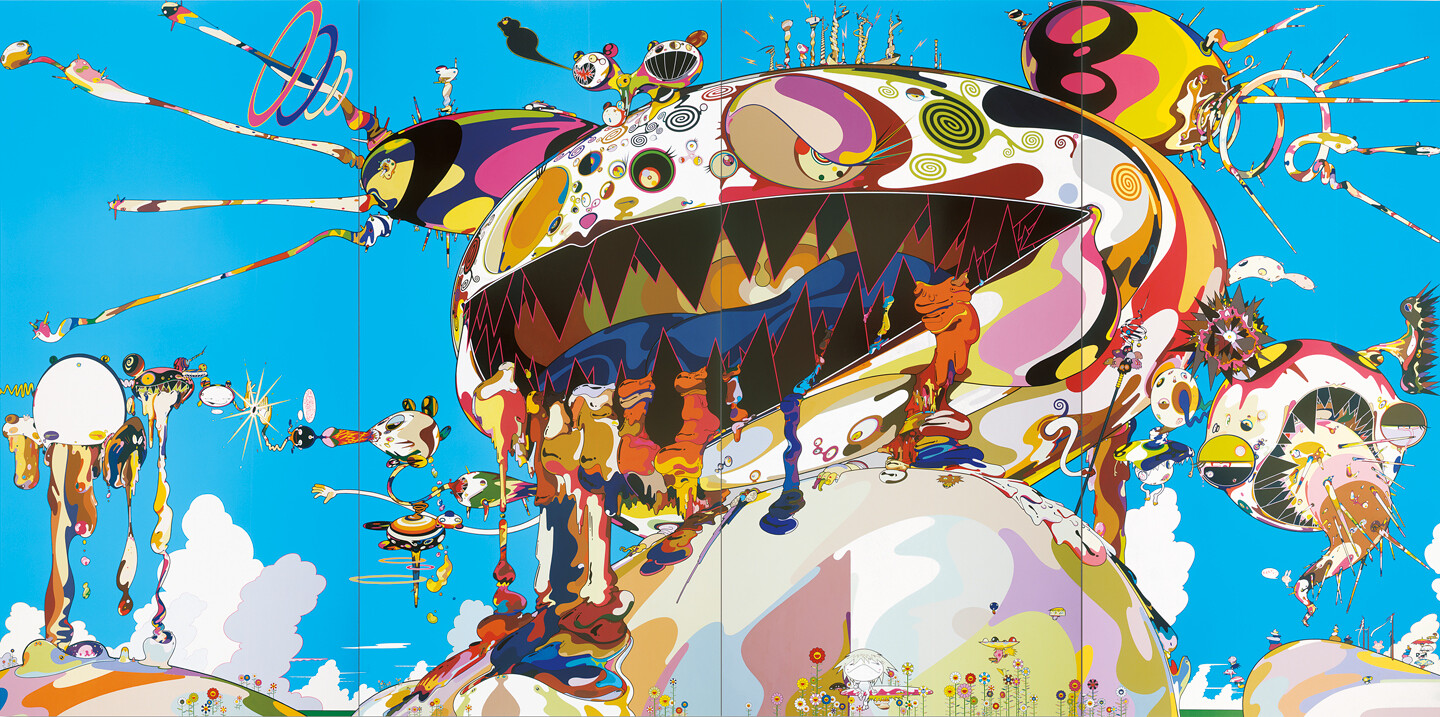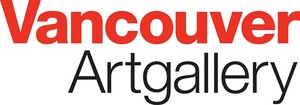February 3–May 6, 2018
750 Hornby Street
Vancouver BC V6Z 2H7
Canada
Hours: Wednesday–Monday 10am–5pm,
Friday 10am–8pm
The Vancouver Art Gallery is excited to start its spring season with Takashi Murakami: The Octopus Eats Its Own Leg (February 3–May 6, 2018), the first ever major retrospective of Takashi Murakami’s work in Canada.
Featuring over 55 impressive paintings and sculptures, Takashi Murakami: The Octopus Eats Its Own Leg offers an in-depth survey of the evolution of Murakami’s paintings from the 1980s to the present, while highlighting the artist’s role as a committed and often conflicted cultural commentator. Spanning three decades from his earliest mature work to his recent large-scale creations, this extraordinary exhibition will include a recently produced five-metre tall sculpture and two specially created multi-panel paintings.
For Murakami, connecting with his audience and allowing his artwork to be accessible to the general public are integral aspects of what he stands for as an artist. Murakami has created a new major public art project featuring a skull surrounded by octopus tentacles which will cover the Gallery’s Georgia Street façade, extending the exhibition outside the traditional confines of the Gallery space.
“We are delighted to offer Canadian audiences the opportunity to experience a wide range of paintings and sculptures by one of the world’s most influential and visionary artists,” says Kathleen S. Bartels, Director of the Vancouver Art Gallery. “In tracing Takashi Murakami’s development as an artist over the course of three decades, The Octopus Eats Its Own Leg draws attention to some of the major themes and cultural conditions that have shaped his artistic practice. We can’t wait to welcome countless visitors from Vancouver and beyond to this monumental exhibition, and for the general public to experience his work every time they pass by our Georgia Street facade.”
The exhibition opens with Murakami’s early paintings from the 1980s that synthesize traditional Nihonga-style painting techniques and formats with contemporary subject matter, and goes on to trace the artist’s shift in the 1990s toward a distinctive, anime-influenced style known as Superflat. From his signature animated flowers to the iconic character Mr. DOB, a mouse-like figure that serves as part ambassador and part self-portrait, the works in the show offer an in-depth look at Murakami’s unique Superflat universe.
The exhibition also features works from a recent body of paintings depicting groups of wizened Buddhist monks (Arhats), including the ten-panel 100 Arhats (2013), an ambitious work of stunning intricacy and craftsmanship. A departure from the commercial pop aesthetic that first garnered him popular acclaim, the Arhat works mark Murakami’s return to his training in traditional Japanese painting in order to find a response to the suffering caused by the massive earthquake and tsunami in Fukushima, Japan in 2011 that killed more than 15,000 people.
“The Octopus Eats Its Own Leg highlights Takashi Murakami’s dedication to exquisite craftsmanship as well as his boundless imagination moving freely within an ever-expanding field of aesthetic decisions and cultural inspiration, from Buddhist folk traditions to art history to popular culture,” says Bruce Grenville, senior curator. “This wide-ranging exhibition offers a serious engagement on issues affecting Japan and the larger world today, from media culture to globalization to the threats of nuclear power.”
Takashi Murakami: The Octopus Eats Its Own Leg is organized by the Museum of Contemporary Art Chicago and is curated by MCA Chief Curator Michael Darling.
About Takashi Murakami
Takashi Murakami was born in 1962 in Tokyo, Japan. He studied at Tokyo University of the Arts, Japan, where he received his BFA in 1986, his MFA in 1988, and his Ph.D. in 1993. He is the founder of the art production and management company Kaikai Kiki, which evolved from its predecessor, the Hiropon Factory founded in 1996.
Murakami is well known for his high-profile projects with brands such as Louis Vuitton, VANS, shu uemura, Issey Miyake, Lucien Pellat-Finet, Roppongi Hills and ComplexCon, as well as collaborations with musicians such as Kanye West and Pharrell Williams. In 2008, he was selected as one of TIME magazine’s “The 100 Most Influential People.” From 2003, he was included in ArtReview’s Power 100 for ten consecutive years. He has also been engaged in a wide range of artistic undertakings such as curating exhibitions and collecting art and other curiosities for his personal collection. Between 2002 and 2014, he regularly organized “GEISAI,” a project intended to discover and nurture young artists from Japan and Taiwan. In all, approximately 20,000 artists participated in these projects. In response to the 2011 Tohoku Earthquake, he launched New Day, a charity initiative that carries out art auctions and other activities to help Japan recover from natural disasters.
Murakami has also ventured into film and animation productions, releasing his first live-action feature film Jellyfish Eyes in 2013. He is currently working on the sequel of Jellyfish Eyes as well as an animated television series, 6HP (Six Hearts Princess).
Contact
Carine Redmond, Carine Redmond & Associates
carine [at] carineredmond.com
About the Vancouver Art Gallery
Founded in 1931, the Vancouver Art Gallery is recognized as one of North America’s most respected and innovative visual arts institutions. The Gallery’s innovative ground-breaking exhibitions, extensive public programs and emphasis on advancing scholarship all focus on the historical and contemporary art of British Columbia and international centres, with special attention to the accomplishments of Indigenous artists and the art of the Asia Pacific region—through the Institute of Asian Art founded in 2014. The Gallery’s programs also explore the impacts of images in the larger sphere of visual culture, design and architecture. Website
The Vancouver Art Gallery is a not-for-profit organization supported by its members, individual donors, corporate funders, foundations, the City of Vancouver, the Province of British Columbia through the BC Arts Council, and the Canada Council for the Arts.


